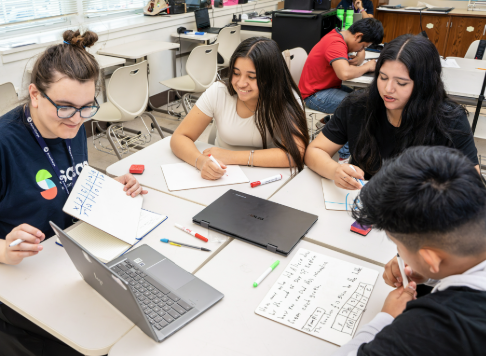Introduction
Student voice is a key element of personalized learning, and Flipgrid is a digital tool that helps amplify it. Flipgrid allows students to record and share short videos in response to prompts, making it an engaging platform for expression, reflection, and discussion. By integrating Flipgrid into personalized learning strategies, educators can create inclusive opportunities for students to communicate in ways that align with their individual strengths and preferences.
1. What Is Flipgrid?
Flipgrid is a video-based learning platform where students respond to teacher-created prompts by recording short videos. Responses can be shared with the class or kept private, depending on the settings. The platform supports creativity with features like video filters, stickers, and drawing tools.
2. Supporting Diverse Learning Styles
Flipgrid allows students to communicate their ideas visually and verbally, making it ideal for learners who may struggle with traditional writing assignments. Whether reflecting on a project, presenting research, or sharing opinions, students can choose how they express themselves.
3. Encouraging Student Choice and Ownership
Teachers can offer open-ended prompts that give students the freedom to choose topics, responses, or perspectives. This flexibility supports autonomy and helps students feel that their voices matter. Personalized learning is strengthened when students take an active role in shaping their learning experience.
4. Promoting Confidence and Communication Skills
For students who may be hesitant to speak up in class, Flipgrid provides a low-pressure environment to practice communication. Recording videos privately gives students time to plan and express themselves clearly. Over time, this builds confidence and self-advocacy.
5. Facilitating Reflection and Feedback
Flipgrid is a great tool for student reflection. Learners can record reflections on their goals, progress, and learning strategies. Teachers and peers can offer supportive feedback through video comments, creating a dialogue that fosters growth and connection.
6. Building Classroom Community
When used as a platform for sharing ideas and stories, Flipgrid helps students learn about each other. This exchange promotes empathy, inclusion, and community-building—important elements in a personalized learning environment.
Conclusion
Flipgrid empowers students to share their voices in authentic and creative ways. By integrating it into personalized learning practices, educators can enhance engagement, support diverse learners, and create a more connected classroom. Whether for reflection, presentation, or collaboration, Flipgrid offers a versatile and student-friendly way to promote meaningful participation in learning.














